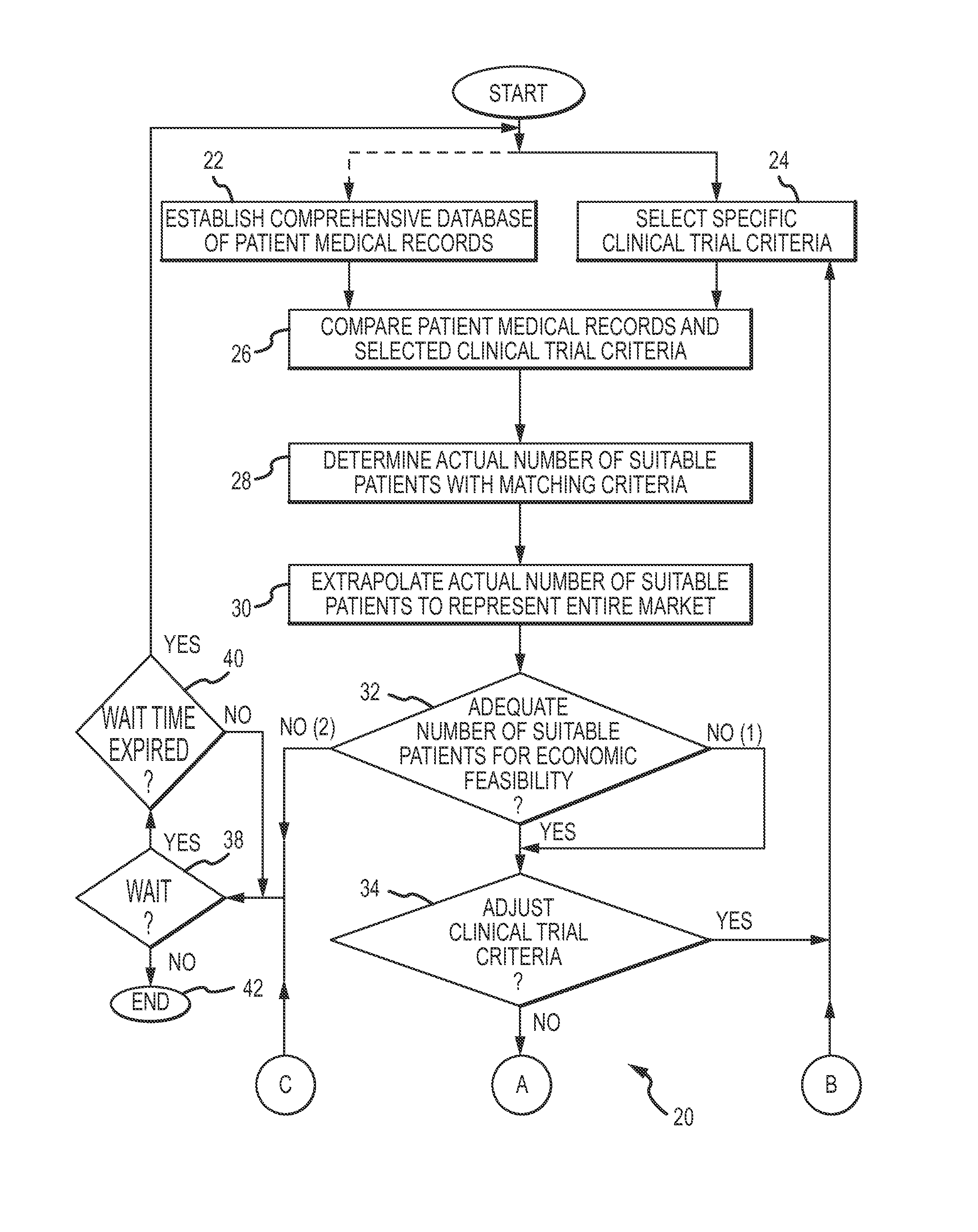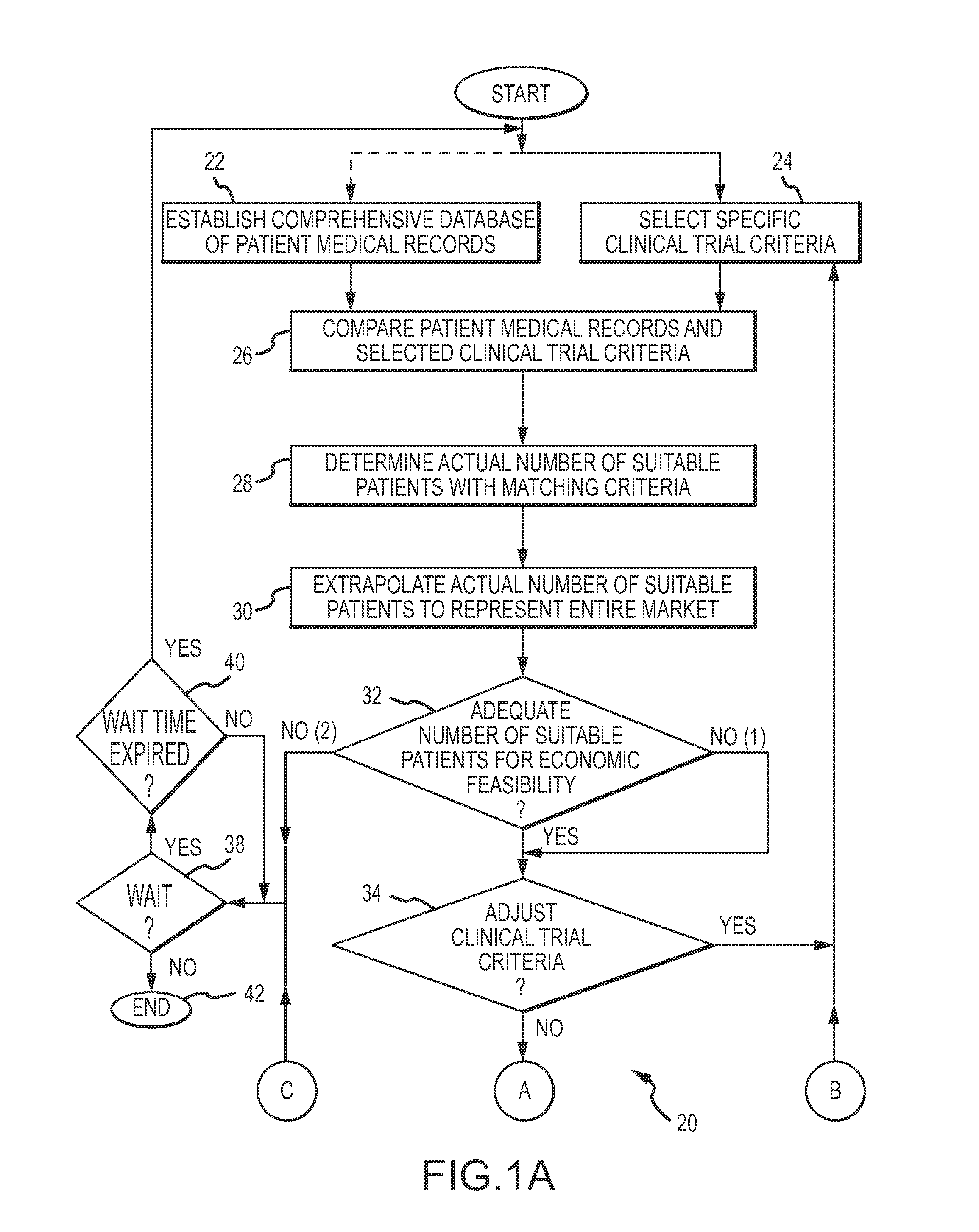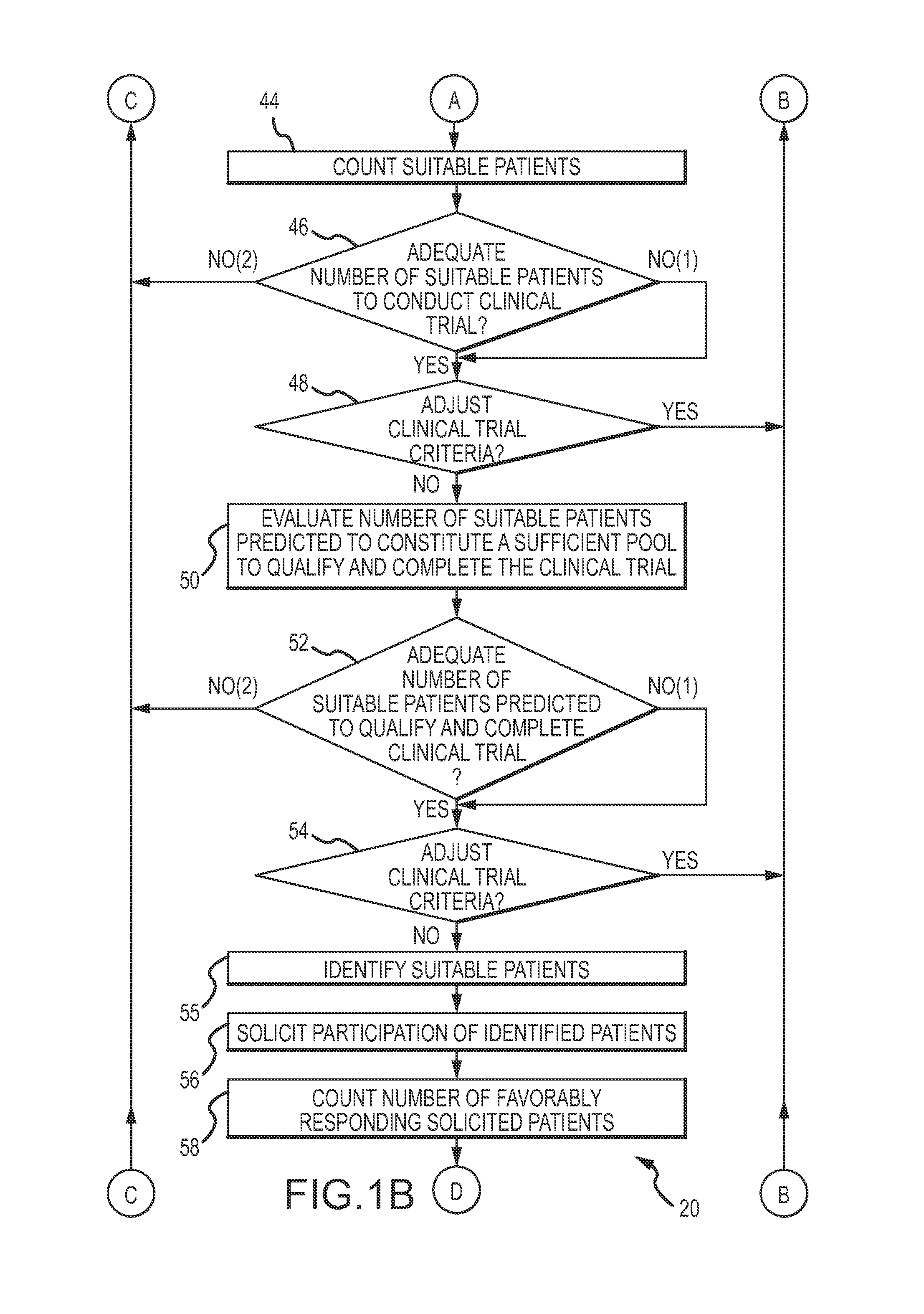Without performing the clinical trial on the relevant cohort group, the results of the clinical trial will not be reliable on the segment of the human
population on which the
drug or
medical device is intended to be used.
Identifying suitable participants in a reliable clinical trial, and obtaining their participation in a clinical trial, are significant problems in designing a clinical trial.
Information describing the medical condition of patients is protected from disclosure by patient privacy and
confidentiality laws and regulations, and these laws and regulations prohibit the disclosure of most of the important and
relevant information without the consent of the patient, but without access to the protected patient
medical information it is difficult to locate and identify suitable participants.
When the number of suitable participants is not readily determinable, it is particularly difficult to design a clinical trial that can be successfully concluded, without incurring considerable effort, expense and
delay.
In the past, there has been no comprehensive
database of individuals and their medical conditions which can be efficiently and lawfully accessed to identify the most relevant clinical trial participants, and / or to design the clinical trial.
The value and success of the public appeal approach is limited by a prospective participant's limited understanding of the specifics of his or her medical condition, and an inability to describe those specifics as found in his or her
medical record.
However, the practical reality is that most physicians and healthcare providers are unwilling to
commit the time and effort required to search individual healthcare records and actively solicit suitable patients to participate in clinical trials.
The requirement for intermediation is a significant impediment in designing efficient clinical trials.
A further difficulty in intermediation between the patient and the
Clinical Trial Entity is that one physician usually does not possess the entire
medical health record of a particular patient.
The lack of a complete
medical record diminishes the probability of any one physician identifying suitable clinical trial participants, and thereby discourages physicians from conducting the search in the first place.
However, the generality of this approach is not specific enough to identify relevant clinical trial participants.
Insurance claims
payment data typically lack the specificity and detail required to effectively evaluate whether the clinical trial criteria is matched.
The success of the healthcare claims
data mining approach is also limited by the requirement for healthcare providers to intermediate communications with their patients.
A fourth previous approach to identifying suitable clinical trial participants fails to address the practical and legal requirements of patient privacy.
The practical reality is that this process is simply not compliant with patient privacy and confidentiality laws and regulations.
It is improbable that large numbers of patients would consent to having their medical records used in this manner.
A further significant practical impediment to this fourth approach is attempting to communicate across a barrier created by the differences and complexities of the many different
electronic systems which contain and manage healthcare records.
A common electronic format is not used in the many different
electronic medical record-keeping systems of healthcare providers, making it very difficult or impossible to extract the relevant data from the individual records and organize the extracted data in a common way for efficient usage.
Even as
electronic medical record keeping systems become more standardized, differences in hardware and
software architectures, version levels, and network and security protocols make it inordinately complex to identify these medical records and repositories, to
gain access to them and to successfully interface with them.
The above-described and other constraints have resulted in the clinical trial industry performing at a substantially sub-optimal level.
According to studies of the Center for the Study of
Drug Development (CSDD) at Tuft's University, 90% of all clinical trials are delayed owing to recruitment and retention issues.
These newly developed customized therapies must be tested in clinical trials, but the problems of identifying relevant cohort groups for customized therapy clinical trials are exacerbated by the
limited access to qualified clinical trial participants who possess the specific health conditions which make them suitable participants in such clinical trials.
However, branching is often constrained by limitations of identifying, accessing and enrolling patients with very specific etiologies as participants in clinical trials.
The problems of designing effective and relevant clinical trials are not just limited to identifying individuals who are relevant prospective participants.
Contacting and communicating with the prospective participants in an effort to enroll them in the clinical trial is time-consuming, whether conducted by the healthcare provider in an intermediary capacity or whether conducted by an administrator of the
Clinical Trial Entity after obtaining patient consent.
A significant percentage of those who agree to enroll will not qualify under applicable government regulations.
Since there was no
effective method to predict the number of suitable prospective participants who will enroll, qualify and ultimately complete the clinical trial, excessive numbers of participants were enrolled as a
cushion to achieve a
successful completion of the clinical trial.
In cases where the number of prospective participants proved to be insufficient after the clinical trial commenced, the clinical trial must be terminated prematurely, resulting in an inconclusive outcome.
Similar problems exist with respect to the costs of and
time delays associated with a clinical trial.
At the present time, the costs of recruiting clinical trial participants exceeds 30% of the overall cost of the trial.
The difficulties in identifying relevant clinical trial participants, enrolling them, qualifying them, and maintaining their participation throughout the duration of the clinical trial, introduces unpredictable
time delays and costs in bringing the
medical device, drugs or therapies to market.
In the past, a reliable and convenient basis to make
economic feasibility evaluations of new medical therapies has been limited or nonexistent.
 Login to View More
Login to View More  Login to View More
Login to View More 


